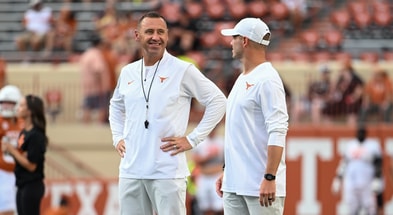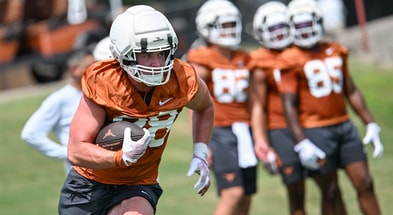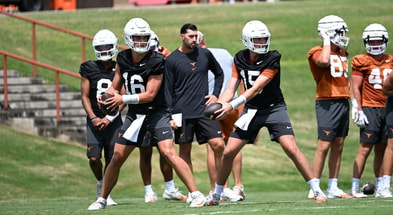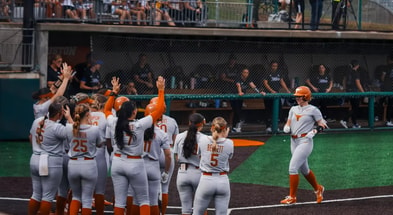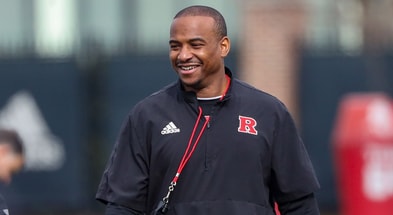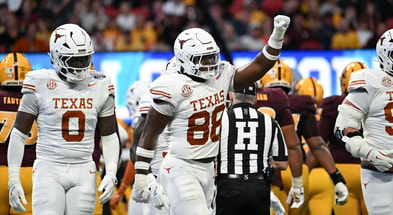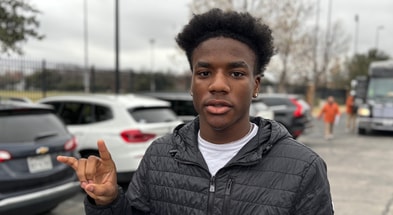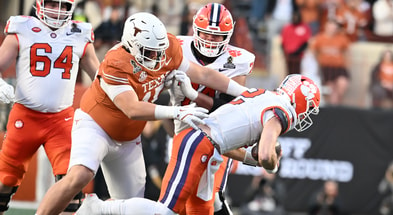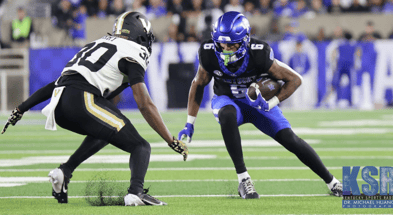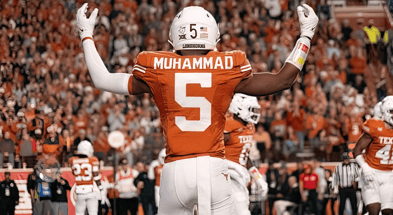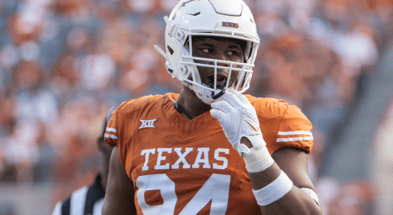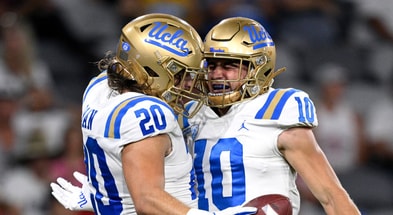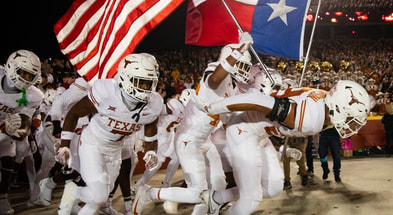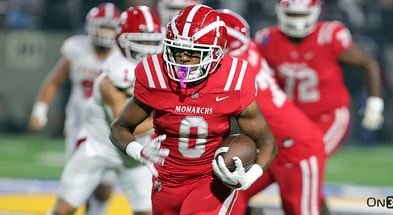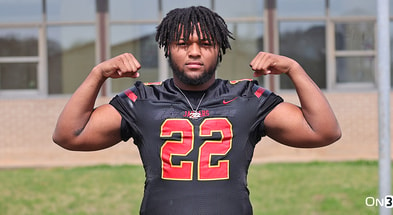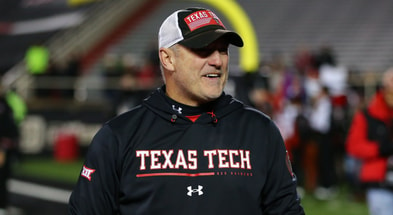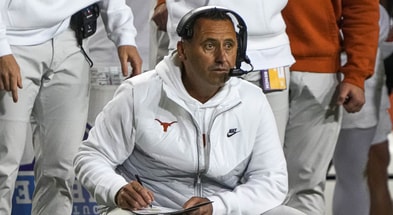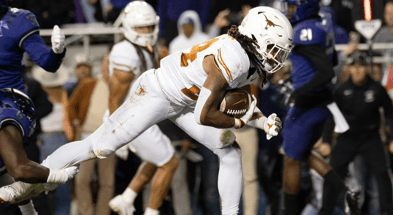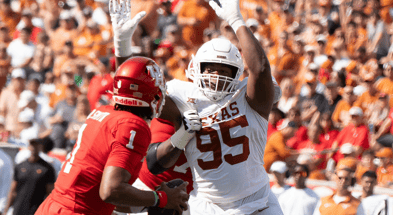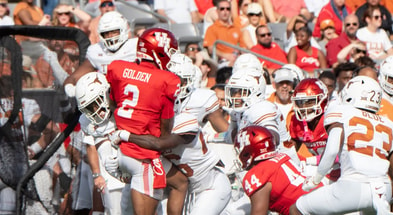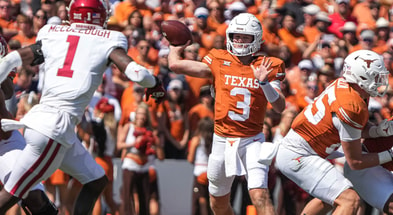Game Of My Life: Darrell Royal
The following is an excerpt from the recently published book, ‘Texas Longhorns: Game Of My Life’. Authored by Inside Texas lead writer Bill Frisbie and co-publisher Michael Pearle, the book can be purchased at Amazon.com and Barnesandnoble.com.
A few days before the second Saturday in October, 1958, evangelist
Billy Graham announced that there had been discernable signs of the Second
Coming. For University of Texas football faithful, the thing that mattered most was whether the longed-for revival of the Longhorn program had found its savior in a young, relatively unknown coach named Darrell K Royal.
College football would find out soon enough. October’s second Saturday, traditionally the date of Texas’ annual showdown with arch-nemesis Oklahoma, loomed ominously. For nearly one decade, the beatings that the once-proud Longhorn program suffered at the hands of the Sooners bordered on apocalyptic.
Oklahoma coach Bud Wilkinson had created a monster program. The
Sooners reeled off 47 straight wins from early 1953 to late 1957, Royal’s
first-year on the Longhorn sideline. OU had won eight of nine against Texas
heading into the 1958 season, dominating the three previous mismatches by a
combined score of 86-7. In short, the 1950s were not Happy Days for Horns fans. The Texas program hit rock bottom with a 1-9 finish in 1956, coach
Ed Price’s sixth and final year. In early December, the five-member Texas
Athletics Council was looking not just for a quick fix but rather a hire for
the ages. Ironically, Texas turned to a former Sooner All-American quarterback
to restore its fortunes. Incredibly,
Royal was just 32-years old when he agreed to work for $15,000 annually.
Few had heard of him. Royal’s rise through the ranks was so
meteoric — he was on the payroll of five different programs during a
seven-year stretch — that he and wife Edith barely had time to unpack their
boxes. But a pair of legendary coaches,
Georgia Tech’s Bobby Dodd and Michigan State’s Duffy Daugherty, spoke so highly
of Royal that Texas officials granted him an interview. Royal’s job description was basically to rebuild the program and
Top 10
- 1Hot
Transfer Portal Predictions
Nakos calls his shot
- 2New
Nick Saban
Details coaching tree in CFP
- 3
Byrum Brown
USF QB heading to SEC
- 4
Austin Simmons
Ole Miss QB commits to SEC foe
- 5
Ashton Daniels
Auburn QB headed to ACC
Get the Daily On3 Newsletter in your inbox every morning
By clicking "Subscribe to Newsletter", I agree to On3's Privacy Notice, Terms, and use of my personal information described therein.
beat Oklahoma, though not necessarily in that order. During Royal’s interview,
a Council member asked, “Now what’s the first game you’re going to
win?” Royal replied: “I think we open with Georgia.” Indeed, Royal’s Texas tenure began with a 26-7 decision over the
Bulldogs in Athens on September 21, 1957. But Royal clearly understood the
question’s intent. “I knew what they were talking about,” Royal said,
“but I wasn’t going to take the job and promise we’d beat Oklahoma my
first year.”
By the opener, Royal had helped launch significant upgrades to
athletic facilities that had begun to reflect the downtrodden spiral of the
football program. In fact, the practice field was in such sorry shape that
Longhorn officials had to import grass from Texas A&M. That same year,
Texas became the country’s first public university to require entrance exams.
Royal responded by creating what became the forerunner of modern day academic
advisors when he hired a science teacher from nearby Lockhart High to work with
his student-athletes. It was such an innovative move that players dubbed the
latest addition as the “brain coach,” but Royal commented, “You
go to college, first and foremost, to learn and to have a chance to better
yourself.”
It helped that players were also bettering themselves on the
field.
When Royal’s Horns opened at home against Tulane one week
later, the Texas program had entered the weekly Associated Press poll
for the first time since losing to Oklahoma in 1954. Royal’s inaugural campaign
resulted in a respectable 6-4-1 finish, including a 9-7 win against No. 4 Texas
A&M and a berth in the Sugar Bowl. But the Horns fell to Oklahoma for the
seventh time that decade. Now, three games into the 1958 season, Texas would
face a loaded Sooner squad ranked No. 2 nationally in both major polls.
Royal was no longer an unknown, but he remained relatively
unproven. He was still searching for a signature win against a traditional
power to validate his program.
“The Oklahoma game became a personal crusade for coach
Royal,” said former All-Southwest Conference linebacker Pat Culpepper.
“He knew that was why they had hired him.”
On October 11, 1958, the “crusade” reached the Cotton
Bowl in Dallas. It was Texas versus Oklahoma for the 53rd time, but Texas
entered the tilt undefeated for the first time in seven seasons.
The Second Coming of Texas football had begun.
No. 16 TEXAS vs. No. 2 OKLAHOMA
October 11, 1958
Cotton Bowl (Dallas, Texas) Texas was listed as a two-touchdown underdog against the Sooners,
so there was little reason to expect that a recent rule change in college
football would factor so prominently in the outcome. The 1958 season marked the
first time the NCAA allowed the two-point conversion following a touchdown. The
measure succeeded, in no small part, because the highly influential Wilkinson
served on a committee that lobbied heavily for its passage.
Not all coaches, however, were pleased with the new-fangled
concept. Royal made no secret of his opposition to the two-point play; he
likened it to playing with someone else’s money and hardly worth the risk. Yet,
a six-game losing streak to Oklahoma called for some moxie. Late in the first quarter, Royal called for a pass on
fourth-and-goal from the three rather than the chip-shot field goal. Sooner
David Baker broke up QB Vince Matthews attempt on the first play of the second
quarter to turn Texas away. Royal would face another fourth-down decision
inside the Red Zone on Texas’ next series. This time, halfback Rene Ramirez
rolled left and hooked up with George Blanch for the 10-yard score.
For the second straight year, Texas scored first against its
interstate rival but, to nearly everyone’s surprise, Texas went for two. It was
a simple handoff with RB Don Allen charging over left guard, but it gave the
Horns an 8-0 lead. The Sooners responded with a 61-yard drive in seven plays
but missed a 30-yard FG by inches.
Texas took its surprising eight-point advantage into the locker
room, but the Sooners owned the third quarter. Texas could not muster a first
down during the entire frame on an afternoon when it rushed for all of 57
yards. Royal’s defense put the clamps on a 13-play drive, turning away the
Sooners on downs at the Longhorn five. Oklahoma would finally hit pay dirt on
its next possession, marching 38 yards on eight plays to score on a five-yard
run. The Horns nursed an 8-6 lead with 3:56 left in the quarter after the
two-point attempt failed. Oklahoma drove 59 yards in 12 plays to the Longhorn
34, but the defense held on fourth-and-two.
Texas desperately needed to establish some semblance of a running
game. Instead, the very next play resulted in one of the flukiest
turn-of-events in series history: Oklahoma’s Jim Davis grabbed a Longhorn
fumble — the ball never touched the ground because a botched handoff landed on
FB Mike Dowdle’s rump — and returned it 24 yards for the defensive touchdown.
This time, Oklahoma completed the two-point try and led for the first time,
14-8.
Both squads exchanged punts, but Oklahoma kept Texas’ defense on
the field for most of the fourth quarter with a nine-play drive. Texas took
over on its own 28 with 6:50 remaining. The Sooners had stuffed Texas’ ground
game all day, but now the Horns took to the air with Matthews behind center. He
completed a critical third-and-18 at midfield with an 11-yard screen pass to
Blanch. He followed with a seven-yard toss to Bob Bryant before connecting with
Ramirez for 11 to set up shop at the Sooner 19. From there, Royal caught
Oklahoma off guard with a fullback draw play as Dowdle rumbled for 14 yards.
Now, all that separated Texas from its biggest win of the decade was five yards
of prime real estate.
It came down to a third and goal from the seven with little more
than three minutes remaining. Another Royal surprise: after 12 plays, the
second-year Texas coach replaced Matthews at quarterback with Bobby Lackey. The
taller signal caller rolled right, faked a handoff but then threw a jump pass
over the middle. He hit Bryant, who was at least three steps from the nearest
defender, in stride. Bryant crossed the goal line untouched before Lackey
kicked the PAT.
Texas 15, Oklahoma 14.
The Longhorns still needed one more big play from Lackey. After
the Sooners drove to the Longhorn 44, Lackey’s one-handed interception sealed
the improbable upset. It was just the second Texas win against Oklahoma in 10
years. Texas fans stormed the field at the final whistle and tore down the goal
posts. Later that night, the team’s aircraft had to circle an Austin landing
strip for 20 minutes until airport officials could clear more than 2,000
jubilant fans from the runway. Royal knew, then, that his fledgling program had
taken flight. The Game Of My Life
By Darrell K Royal
I guess you could say the (1958) Oklahoma game was the one that
started it all for us. There had been a six-year streak of Oklahoma wins
against Texas. That (1958) win probably helped more than anything else to
getting me established at Texas. All I was thinking at the time was about
trying to be around for a while. I was just trying to win enough games to keep
from being chased off. I was a young coach trying to earn the confidence of
players, alumni, fans and sports writers. We were trying to get back the
winning tradition that Texas had under coach (Dana X.) Bible.
It was one of those situations where the pupil was playing the
teacher. Coach Wilkinson had more influence on me as a coach than any other
coach. I played for him, but now I was coaching against him at Texas. I elected
to be a coach and I was lucky that The University of Texas selected me to come
here.
That was the year the NCAA brought in the two-point play. I was very much opposed to the two-point
conversion. I always thought it was too much of a gamble. The odds are
three-to-one against you. It put a lot of strain on coaches. You’d probably
wind up wearing a straw hat to a Christmas party if you went for two every
time. But we had to take some gambles that day. We felt like we had to swing
from the floor and be as aggressive as we could possibly be. So, after we
scored first, we decided to jump up quick from the huddle and go for two.
Fortunately for us, it was successful. It was the difference in the ballgame.
Of course, we had to score again. They (OU) had a fumble return
for a touchdown and we had to collect ourselves in a hurry. I’m sure it seems
strange that after Vince Matthews had passed us all the way down to the goal line
that I would put (QB Bobby) Lackey in for the (winning) pass. But Lackey was
taller (6-foot-3) and had more experience with that play. He had run that play
more in practice than Vince had and I wanted to send in that play, anyway. I
substituted Lackey back in, he faked the handoff and threw a jump-pass to (end)
Bobby Bryant.
I remember we had a hard time running the ball that day. Most
teams don’t run on Oklahoma. I didn’t mind the reputation I had that we didn’t
throw the ball but, if you look at all the big games that we won, we did a lot
of throwing in them. The 1969 Arkansas game, the (1963) A&M game, the
(1964) Cotton Bowl game where we played Navy, we did a lot of throwing to win
those games. We ended up throwing to beat Oklahoma that day.
As a young coach, beating Oklahoma that day meant a lot. It meant
a lot to me, it meant a lot to our team and it meant a lot to our future
because now the players learned (pause) that it’s possible.”
Upon Further Review
Oklahoma was the better team that year, but Texas was the better
team that day. The Sooners would finish No. 5 in both polls while leading the
nation in scoring defense (4.9 ppg). Meanwhile, Texas would drop three
conference games and was shut out of the postseason. Six Sooners went on to
First-Team All-Big Eight status while Texas did not field a single
All-Southwest Conference athlete for the only time in Royal’s tenure. But the
one-point Longhorn win signaled a dramatic reversal of fortune in the series.
Including the 1958 game, Texas would take 12 of 13 from Oklahoma.
The rest, of course, is Burnt Orange history. When Royal called it
a career after 20 seasons, his resume included 11 Top Ten finishes, 11
conference titles, 16 bowl games and three national championships. ABC-TV named
him the Coach of the Decade for the 1960s. He never had a losing season.
There will always be those who insist Royal was gradually shown
the door, at age 52, after stumbling to an 0-5-1 mark against the Sooners to
end his tenure. Royal is generally content to allow those folks to think that.
“I wanted to quit while I was still having fun,” Royal
said. “I didn’t want to coach until I didn’t like it. I wanted to get out
before people wanted me out.”
Others continue to point to the fact that Texas, like so many
other southern programs, was slow to recruit African-American players. For the
record: Royal had coached black players while at Edmonton (1953) and Washington
(1956). Texas will always bear the dubious distinction of being the last
all-white team to win the national championship in 1969, but the program was
integrated the year before when the freshman team included three
African-American players (two walk-ons and a scholarship player who would transfer).
At the end of the day, Royal would go out the way he came in: as a
winner. Including the 1957 season-opening win against Georgia and his
career-ending 29-12 nationally-televised win against Arkansas in 1976, Royal’s
record at Texas stood at 167-47-5. It was the best mark in college football
during that two-decade span. The University honored its all-time winningest
head coach by naming its football stadium — Darrell K Royal-Texas Memorial
Stadium — after him in 1996.
Perhaps the only thing more impressive than Royal’s final tally is
an enduring legacy that cannot be quantified. Case-in-point: current Texas
coach Mack Brown chuckled a few years ago when asked what type of legacy he
wanted to leave at the Forty Acres.
“There will only be one legacy at The University of
Texas,” Brown said, “and that’s coach Royal.”

